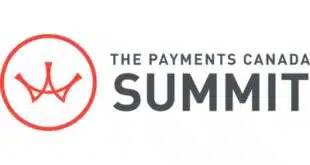The key lies in navigating network surcharging frameworks to avoid costly mistakes.
Amid rising inflation and persistent economic uncertainty, merchants are more cost-conscious than ever, scrutinizing every expense to protect their bottom lines. Interchange fees, a long-standing source of frustration, have become a focal point of their discontent, fueling debates over fairness and the financial burden imposed by the card networks.
For many, the solution is to surcharge.
Surcharging has exploded in many verticals as an effective means of offsetting payment-processing fees. Unfortunately, the trend is outpacing the regulators. Visa recently experienced a glaring example of this when its chief executive was surcharged in violation of compliance standards three times. On the same day. At the same merchant location. In Visa’s own building.
For the network, which has been intensely focused on the surcharging issue for some time, this serves as a stark reminder of the problem’s scale.
Done right, surcharging is a practical way to manage costs. Done wrong, the fallout can be devastating for the unwitting merchant. This is by design, as non-compliant surcharging poses a direct challenge to the networks’ legitimate focus on preserving brand loyalty.
Widespread Noncompliance
If you’re a merchant considering surcharging, here’s what you need to know to surcharge like a pro and avoid landing in the networks’ crosshairs. Other brands have rule sets around surcharging, but I’m limiting this article to Visa and Mastercard rules for the sake of clarity, as there are subtle differences in other brand policies.
You are encouraged to investigate surcharging rules for any brand you accept. Digital copies of surcharging rules are publicly available, or your merchant service provider or sponsor bank can provide them.
So, what exactly is (and isn’t) surcharging?
It’s is the practice of passing on the cost of credit card acceptance to the cardholder. Instead of absorbing card- processing fees, merchants add a compensatory fee to the transaction when customers choose to pay with a credit card.
The classic example of surcharging comes from the petroleum business. Who doesn’t remember gas stations listing per-gallon prices as cash vs. credit?
Surcharges are explicitly tied to the use of credit cards, so they don’t apply to debit cards. The surcharge rules are ostensibly to protect consumers from overcharging and ensure fair practices, but these rules also define a strict framework around if, when, and how the merchant can surcharge.
Convenience fees, by contrast, are charged for the privilege of using a specific payment method, like paying online instead of in person. Service charges are broader fees applied regardless of payment method, often as part of the overall cost of doing business. Understanding these distinctions helps merchants remain compliant while effectively managing costs.
It’s easy to understand the brands’ emphatic concern about non-compliant surcharging, which stems from a dramatic surge in merchant adoption and, unfortunately, widespread non-compliance. From excessive surcharge amounts to improper disclosures, surcharging complaints have skyrocketed by a factor of 20 in the previous two years.
Too many merchants are cutting corners—typically in a bid to maximize revenue, often ignorant of the rules. But Visa, Mastercard, and the other card networks are all keeping a close eye on the practice. They’re not against surcharging. They’re against non-compliant surcharging.
Knowing they had a problem long before the now-infamous triple surcharge incident in their own headquarters, Visa’s stance has been clear, and shared by its brother networks: We’re paying attention—close attention. Follow the rules, or face penalties, reputational damage, and possibly lose the ability to accept our brand altogether.
Follow the Rules
Here’s the lowdown on the Visa and Mastercard surcharging rules. Merchants that stick to these will stay in the clear.
- Notify the Network and Your Acquirer. Merchants must provide written notice to Visa/Mastercard and their payment processor/acquirer at least 30 days before implementing surcharging. Most acquirers will notify the networks on your behalf; Mastercard requires registration from the acquirer.
- Credit Cards Only. Surcharging is allowed on credit cards only, not debit cards—even if the debit card is processed like a credit card, without PIN entry. Surcharging on debit is a prevalent trend getting merchants in trouble. In some cases, third-party solutions are where the trouble lies. If your point-of-sale terminal or e-commerce gateway isn’t configured properly, you may already be in violation.
- Cap the Surcharge Amount: For Visa: The surcharge cannot exceed the merchant’s actual cost of acceptance or 3% of the transaction amount, whichever is lower. For Mastercard, the surcharge is capped at the lesser of the merchant’s Mastercard discount rate or the “maximum surcharge cap,” separately determined and published by Mastercard.
- Disclose Clearly at Point of Entry: Merchants must display prominent signage at the point of sale to inform customers of the surcharge. Transparency is non-negotiable. This is a common pitfall for merchants, particularly in e-commerce verticals, where third-party checkout is often implemented. Merchants should ensure their providers are displaying proper notifications of surcharges prior to the point of entry. (The gas-station example is right on point here, as consumers were clearly informed of additional cost if they chose to pay via credit.)
- Surcharge Uniformly: Both Visa and Mastercard allow merchants to impose surcharges at the product or brand level, but the surcharges must be uniform across the selected category (for example., all Visa or Mastercard credit cards or specific product types like “World Mastercard”). Both networks prohibit surcharging at both the brand and product levels simultaneously.
- Follow State Laws: While surcharging is permitted under federal law, some states still restrict or prohibit the practice. As of this writing, most states allow surcharging, but merchants should verify local laws to avoid legal headaches. (Visa and Mastercard policies cede their own rules to state or federal laws.)
- Separate Fee Line Items: The surcharge must appear as a distinct line item on the customer’s receipt. Bundling it with the transaction total is not allowed.
Avoiding Missteps
So, back to that example of the CEO’s purchases. What went wrong? It’s unclear whether the surcharge exceeded the cap, wasn’t disclosed properly, or was incorrectly applied to a debit card. But being charged three times in one day suggests a systemic failure, one that could have been avoided with proper implementation.
When navigating this process, it’s essential to remain vigilant for potential missteps that could derail your efforts or lead to unnecessary complications. Here are some of the most frequently encountered pitfalls, along with insights to help you sidestep them effectively:
- Mixing Up Card Types: Accidentally surcharging a debit card is one of the more prevalent violations, and by far the most expensive. Fees begin at $1,000 upon first offense, and quickly rise to $25,000 per violation for repeat occurrences.
- Relying Solely on Third-Party Compliance: Given the wide array of POS and POI solutions in play today, this is a rapidly emerging root source of non-compliance. Merchants often put too much trust in their third-party provider to consistently meet network compliance requirements. Unfortunately, non-compliant hardware or software is no defense when it comes to network assessments or penalties.
- Failing to Train Staff: Proper employee training is critical to ensuring surcharges are applied correctly and in compliance with both network rules and legal requirements. Employees should be well-versed in identifying eligible transactions, communicating surcharge policies to customers, and following the correct procedures at the point of sale. In-house developers must fully understand the rules to ensure accurate programming.
- Skipping Notifications: If you don’t notify the brand and your acquirer, you’re out of compliance from day one. As mentioned above, notifying your acquirer should trigger notification to Visa, but the merchant may notify directly. Mastercard requires registration by the acquirer.
- Overcharging: Even a penny over the cap can result in penalties. This lies at the heart of the surcharging theme—to surcharge more than your cost of acceptance is, by definition, to profit from the surcharge, which violates network rules and undermines trust among merchants, cardholders, and the payment ecosystem.
Final Thoughts
For merchants, crossing the line with surcharges is potentially fatal. Non-compliant surcharging can result in chargebacks, fines, or even loss of the ability to process payments. No less important, it erodes customer trust. Nobody likes unexpected fees, especially if it appears he is being overcharged.
It’s easy to imagine the scenario: a consumer is surprised after being charged more than expected—no signage or notifications; nothing on the receipt. The consumer promptly disputes the transaction, leading to an undefendable chargeback to the merchant. And a potential fine from the network. Ouch.
Worse, it erodes trust in the merchant’s own sponsors and regulators—the acquirer and the networks. In this industry, merchants are well advised to avoid angering their sponsors, which hold all the evidence and possess a memory that never fades.
But done correctly, surcharging can be a valuable tool. Legitimate surcharging allows merchants to offset rising interchange costs while maintaining critical transparency with their customers. In today’s economic climate, even the smallest incremental savings move the needle.
Surcharging isn’t just about following rules. It’s about creating a seamless, transparent experience for your customers. Heightened focus on enforcement is a reminder that compliance is critical. And ignorance is no excuse.
I’ll leave you with this: Surcharge away—but do it smartly. Follow the rules, train your staff, and ensure your systems are set up for frictionless, legitimate surcharging that will thrill the CFO.
—Cliff Gray is principal at Gray Consulting Ventures, a payments advisory.





